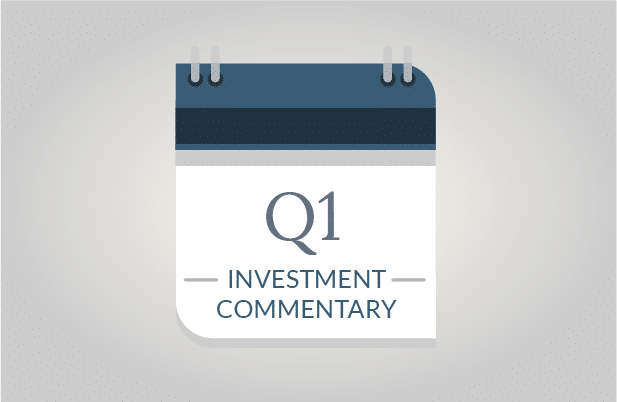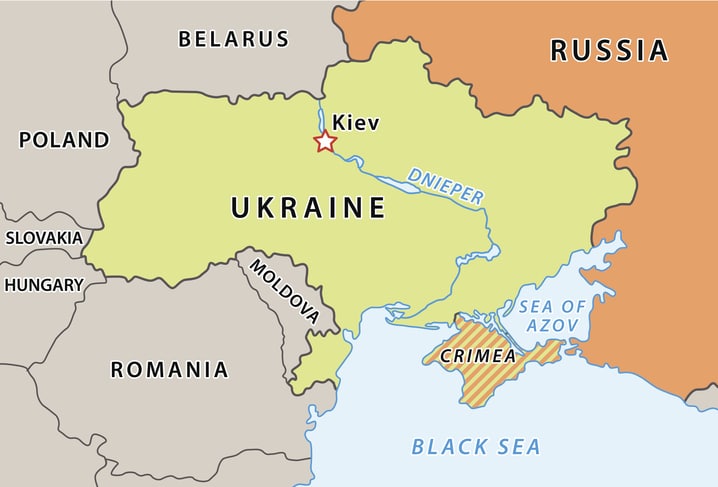- Stocks and bonds suffered simultaneous losses in the first quarter of the year.
- Inflation continued to escalate, with increased risks that inflation could be more persistent versus transitory.
- Russia’s invasion of Ukraine has elevated geopolitical and financial risks around the world.
A Challenging Start to 2022
The first quarter of 2022 was a challenging one for investors as both stocks and bonds suffered material losses. Declines generally ranged from -4% to -9% for the quarter. The good news is that stocks recovered from deeper losses earlier in the quarter.
The start to 2022 is a prime example of why chasing yesterday’s market leader can result in unintended consequences. The darling technology stocks of recent years suffered some of the steepest losses with the Nasdaq down roughly 9%. Technology stocks suffered losses for a variety of reasons ranging from the economy to company fundamentals.
While it’s generally uncommon for stocks and bonds to suffer losses in tandem, such periods can happen, as recently experienced. A multitude of events led to widespread declines. These largely include rising costs due to supply chain bottlenecks from the pandemic, resulting inflation, and the conflict in Ukraine that has further exacerbated inflation.
Historically, stocks have outpaced inflation over time, offering investment growth net of inflation effects. While we can never guarantee future results, we feel strongly that this historical trend has a strong potential to persist looking forward.
Stock Market Declines
Stock markets were certainly impacted by Russia’s invasion of Ukraine. However, it’s worth noting that stocks (primarily tech stocks) started declining in advance of the Ukraine crisis. Inflation effects were a contributing factor and largely considered to be the reason why technology leaders such as Apple and Amazon slumped by roughly 17% in January.
Deteriorating company fundamentals, including earnings forecasts, also contributed to technology stock pullbacks. Facebook’s parent company Meta suffered a 26% loss in one day as Facebook reported its first-ever decline in users. Twitter lost more than 50% of its value earlier this year due to a falling user base, a new CEO, and earnings short of estimates. Twitter is certainly an extreme example, but the pullback in technology stocks as a whole has been meaningful. This illustrates why we maintain a blend of growth and value stocks in portfolios.
Bond Market Retrenchment
Bonds have also suffered losses this year with the largest three-month loss since 1980. Inflation coupled with Fed rate increases have pushed interest rates higher.
An additional variable of note is that the bond yield curve recently inverted. Typically, interest rates trend higher as you move from short-term bonds to longer-term bonds with more extended maturities. However, there are occasional instances when short and/or mid-term interest rates exceed long-term rates. Such an instance is known as an inverted yield curve, and it’s often seen as a precursor to a recession on the premise that higher short-term rates can be an indicator of weakness ahead. However, history shows us that inverted yield curves don’t always lead to recessions, such as the last time it occurred in 2019.
U.S. Economic Growth
Fortunately, consumer spending remained positive in February, albeit at a far more modest rate of 0.2% as compared to growth of 2.7% in January. The hope is that spending will have an uptick now that Omicron has subsided. On a positive note, U.S. household income rose in February as unemployment declined and wages increased. Higher earnings could support higher spending. While inflation is creating a drag on the economy, extended pent-up demand coupled with waiting for goods in short supply could continue to support spending and the economy as a whole.
Inflation
The primary headwind facing the economy is inflation. Inflation was originally anticipated to be transitory as the world emerged from the pandemic, people returned to work and supply chain disruptions were resolved. Russia’s war efforts changed expectations of how long inflation might persist as the impacts of sanctions likely will not be short-lived.
Price increases have become material throughout the economy, including core living costs such as food, gasoline, and housing. U.S. inflation hit a 40-year high of 7.9% in February. This was before oil prices surged, suggesting that upcoming inflation reports will likely trend higher.
Higher gasoline prices are the most talked about impact by Americans today. President Biden recently triggered the largest release ever from our emergency oil reserves. He also announced plans to punish U.S. oil companies if they don’t increase production to help ease gasoline prices, although this could take time to affect prices at the pump. Additionally, it is yet to be seen if U.S. oil companies will comply with these demands as they evaluate potential long-term financial risks if overall demand for fossil fuels eventually wanes.
Fed Actions
The Federal Reserve (Fed) recently implemented its first rate increase since 2018. Many expected a 0.50% increase, but the Fed proceeded with a more modest 0.25% step in rates. The decision for a modest increase could have been impacted by the Ukraine crisis, presenting economic risks. The Fed and other central banks face a difficult balance trying to stymie inflation (which is usually addressed by raising rates) and supporting the economy (which is usually approached by lowering rates). They’re also faced with navigating how to reduce the fed balance sheet which ballooned during the pandemic. There are no easy answers, particularly in the current environment.
Globalization in Question
Current sanctions and global tensions spawned by Russia’s invasion of Ukraine are drawing globalization into question. Globalization is the flow of trade as imports and exports between various countries.
Most countries have increased their levels of imported goods and services over the past several decades as the world economy has become more intertwined. However, current sanctions imposed on Russia and warnings of sanctions on China if China supports Russia have raised questions about globalization. Businesses and countries are evaluating the risks of relying on other countries, particularly when geopolitical risks are elevated.
While we’re already feeling the impact of sanctions on Russia, the effect of sanctions on China would almost certainly be more severe. Virtually everyone can walk around their house and pick up items marked “Made in China”. China is the second largest economy in the world, and the country from which we import the most goods.
While the potential for China’s involvement and resulting U.S. sanctions are a material risk, we think it’s important to note that China would suffer as well. China’s economic growth has dramatically curtailed, causing China to take significant actions to stabilize its markets and bolster its economy. A country that is already struggling to support growth is hopefully keenly aware of the detrimental impacts of sanctions.
Looking Forward
We recognize that risks are elevated. While we can never make predictions, we do believe it’s important to maintain an optimistic outlook, while recognizing that things could get worse before they get better. We also believe that this highlights how thoughtful and strategic financial planning can help you evaluate risks and avoid emotional investment decisions. Our planning purposely stress tests portfolios, evaluating the impact that market downturns can have on your long-term financial security. As always, we’re available to discuss your investments or broader finances.
SageVest Wealth Management




